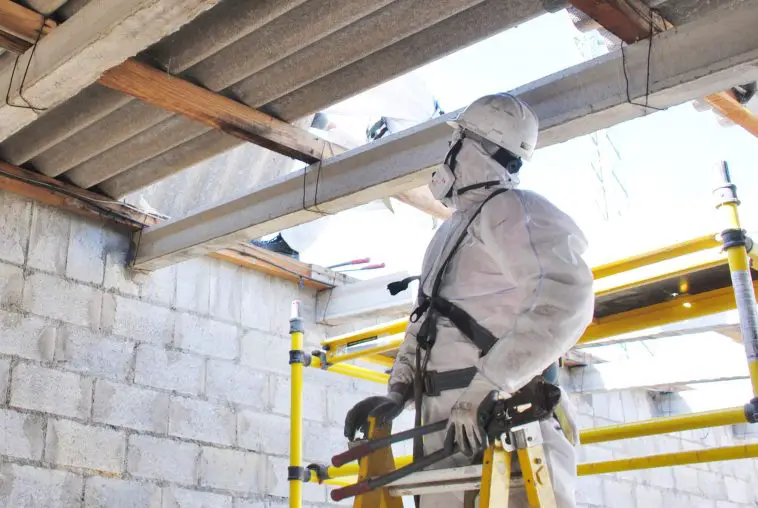Asbestos is a fireproofing material that is frequently used in the construction industry. It has been used as insulation as well as to strengthen floor tiles, wallboards, joint compounds, concrete, pipes, vinyl roof shingles, and in adhesives. We now know that asbestos is a fibrous mineral that is harmful when inhaled.
Although it has been banned in many countries for being one of the leading causes of mesothelioma, a type of lung cancer, asbestos can still be found in homes or buildings that are at least 10 to 15 years old.
While lung cancer can be caused by lifestyle, smoking, and air pollution, there is the possibility that it is caused by inhaling asbestos in your home, which means that your family and everyone in the house can develop cancer or lung disorders such as pleural plaque, mesothelioma, and asbestosis. Fortunately, there are many asbestos removal services available today.
This article summarizes five (5) tips about what you should do if asbestos is found in your home, including how to test if there is asbestos in your home.
1. Identify Areas For Asbestos Testing
As a property owner, you can learn how to check whether or not there’s the presence of asbestos in your house. As a primary step, you should first determine the most viable areas for asbestos testing. That way, you’re more aware of where to begin your search rather than guessing and feeling your way around the house. Some of the areas of the house that should commonly be tested for asbestos include the following:
- Gutters
- Asbestos cement products such as garage roofs and walls, drainpipes and partitions
- Water cisterns and pipes
- Textured coatings
- Asbestos insulating board
2. Identify Areas With No Asbestos
To save yourself the hassle of always worrying about the presence of asbestos, there are also some areas in your home where you can be sure that asbestos is used. For instance, if your walls or ceilings are made of glass, wood, stone, bricks, or metal, you can rest assured that these areas are asbestos-free.
3. Identify Signs Of Asbestos
How sure are you that your home has asbestos in it? Or how can you guarantee that your home is asbestos-free? Asbestos can be very hard to detect simply because it’s used in different materials. In short, your walls aren’t the only place in your home that you have to examine.
Be wary of these red flags that tell you that asbestos is, in fact, present: frayed building or piping insulation, crumbling drywall, brittle ceiling tiles, damaged shingles, and old corrugated cement roofing.
We know that it’s not always easy to spot asbestos. In fact, asbestos can be invisible to the naked eye. Thus, you may need to call an expert asbestos removal provider to ensure that you’re living in a safe and healthy environment.
4. Prepare For Asbestos Testing
As mentioned, the best strategy is to have your home tested for asbestos. First, you have to gather as much information as you can about the structure, particularly when you aren’t the first dweller. Here are some of the best ways to prepare for asbestos testing:
- Contact the engineer, contractor, and architect of your home or building.
- Look for records that can indicate old asbestos work on your home.
- Contact the suppliers of all of the equipment in your home.
- If you’re not the first owner of the house, contact the previous owners.
- In advance, contact a mesothelioma lawyer, in case someone in your family has, in fact, suffered the ill effects from asbestos.
5. Apply For Asbestos Management Survey
Once you’ve prepared for asbestos testing, it’s best that you apply for an asbestos management survey so that asbestos removal can be done in the safest way possible. You will be assured that no one will be harmed while asbestos is being removed from your home.
After the removal of asbestos from the structure, the professional service should provide you with results such as of the following:
- Any surface treatment that was done
- Asbestos types found
- Locations of the asbestos found
- Extent of asbestos
Takeaways
For homes that are at least ten to fifteen years old, it’s common to find asbestos, unless an asbestos removal was done before. If you know that you’re living in an old home, you should play it safe and take the prudent step of testing for asbestos. In so doing, you’re ensuring that your family is not at risk of the consequences. Asbestos is a leading cause of lung cancer. With the summary provided in this article, now you are on a good start with ensuring that your home is asbestos-free.



